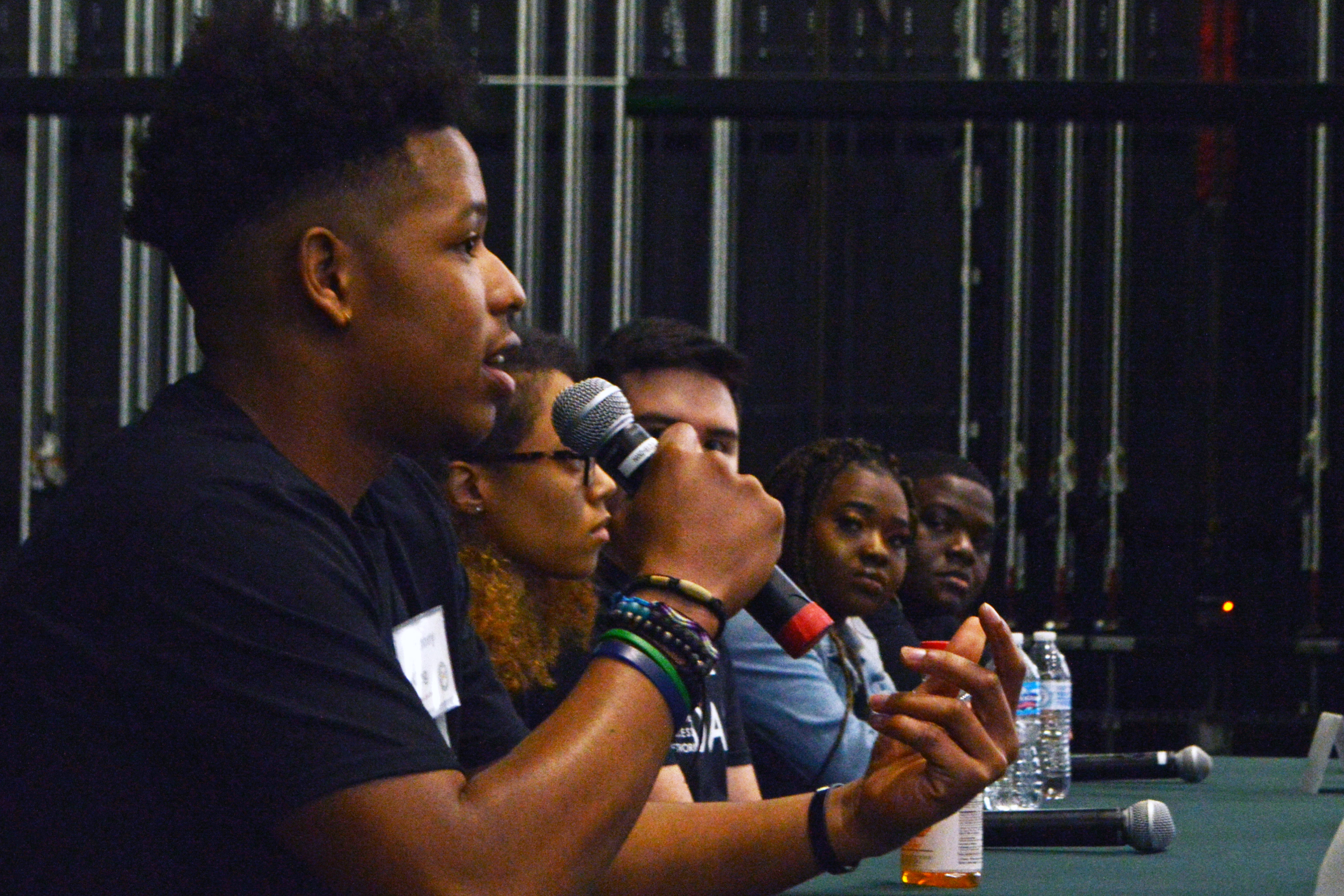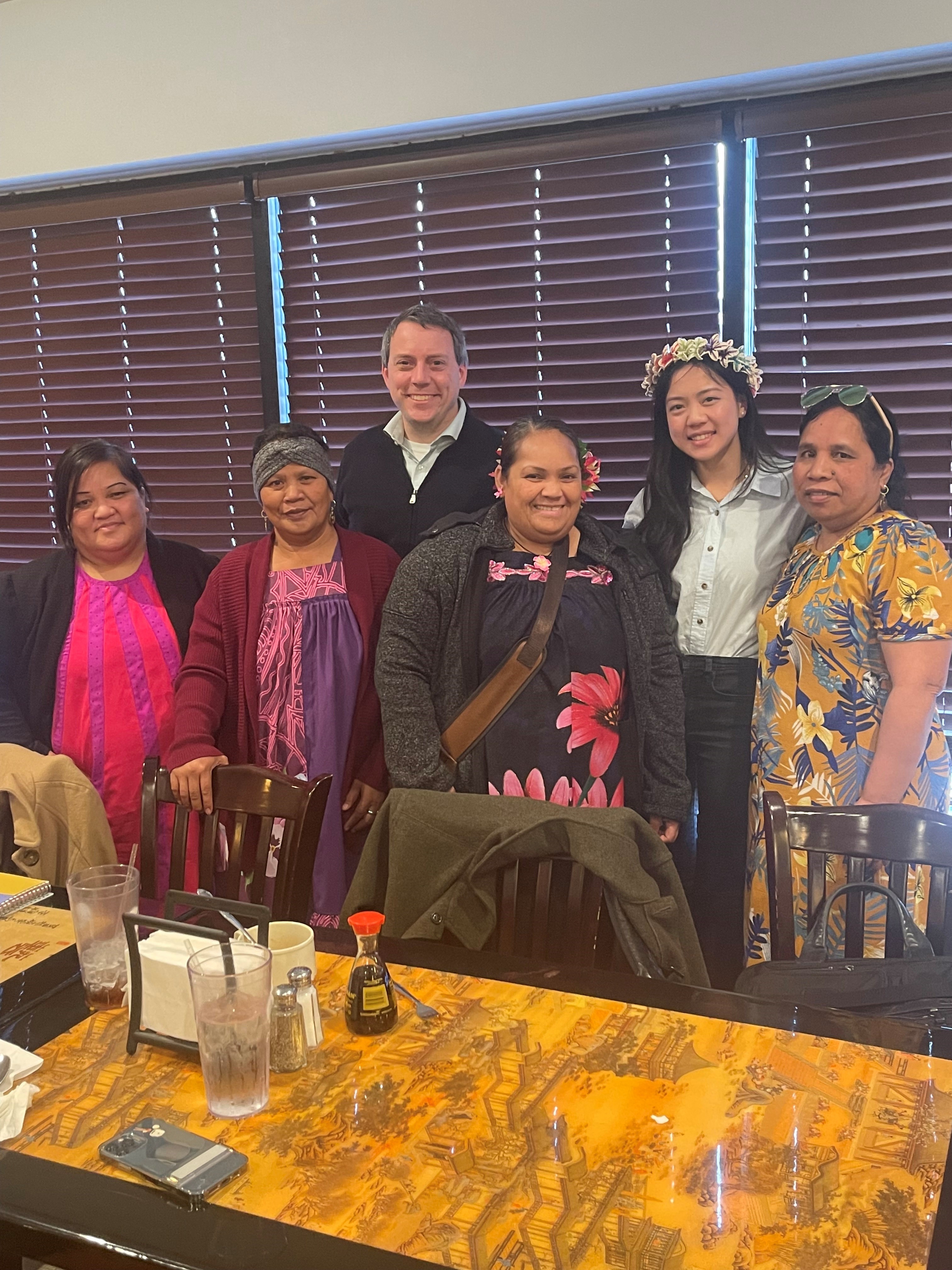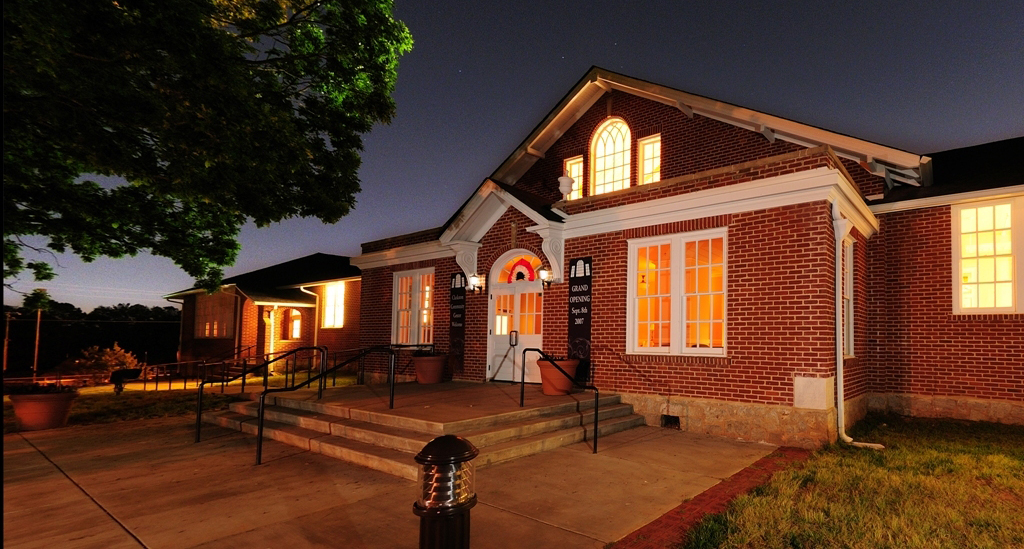Recommendations for Capacity and Power Building

One important way of building capacity within immigrant communities is to support the creation or development of an immigrant-led nonprofit organization focused on serving and advocating for immigrant communities. This would allow immigrant community members to be paid to serve their community (instead of only doing it as volunteers), would create an official point of contact for local organizations looking to engage with immigrant communities, would place resources and decision-making authority within immigrant communities, and would develop a more formal structure for community members to be able to elevate concerns or needs. Such an organization would greatly help in overcoming connection barriers while also providing leadership opportunities for immigrants. This was also a need that was frequently identified by immigrant community members during interviews and focus group sessions.
Such an organization would also serve a different role than immigrant staff within other service providers (see Navigation section), or organizations led by non-immigrants who advocate for and support immigrants (see Outreach section). Both of these assets are crucial for immigrant communities to be able to thrive within this region, and they have done much of the heavy lifting in recent years. But navigators are limited in their ability to make choices about the allocation of resources and are constrained by the decisions of their organizations. And organizations not centered in immigrant communities may struggle to truly understand and advocate for community needs, and may face cultural, linguistic, and trust-based challenges. An immigrant-led nonprofit would help fill a gap that exists within the current framework of service organizations.
But creating an immigrant-led nonprofit organization also raises several questions. The first of which is whether to have an organization supporting just one immigrant population (such as a Marshallese-led organization that advocates for Pacific Islanders), or a pan-immigrant organization that seeks to address the needs of multiple populations. Throughout interviews and focus group meetings, immigrant community members have been divided on this answer, with some wanting to create as inclusive an organization as possible, and others interested in working to build support and advocacy for just their community. Both options have strengths and drawbacks, and identifying which option is the best will depend on the local situation and the circumstances around its creation. For groups looking to launch an organization, it will be important to consider:
- Who are the leaders within immigrant communities who are helping drive the creation of this nonprofit, and what are their interests?
- What funding is available, and what type of program is it best suited to support?
- What assets are available to help with the creation of the program?
- What is the makeup of the immigrant populations in the area, and what kind of connections exist among different immigrant communities?
- Which option are immigrant community members most interested in launching?
Generally speaking, it will likely be organizations focused on the needs of a specific immigrant community that are the most likely to be created and will see the most buy-in from within immigrant communities. For a potential pan-immigrant organization option, please see 2. Establish an Immigrant Center on the next page.

There are also organizations already in existence within this region that could be expanded to help fill this need. This expansion would have the advantage of not needing to develop an entirely new entity from the ground up. Three potential options within Dubuque include:
- Latino Empowerment and Development (LEAD): This nonprofit helps connect Latino residents with educational resources, food, personal protective equipment, and other necessities. It is currently run entirely by volunteers and has a minimal budget.
- Monsoon Asians & Pacific Islanders in Solidary: This statewide nonprofit serves victims/survivors of domestic violence, sexual assault, and human trafficking in Asian and Pacific Islander communities. Within the past several years Monsoon opened a Dubuque office staffed by local Pacific Islander community members. Monsoon’s mission is important and should be a focus on their work, but there is the possibility that with support from the community they could expand to help incorporate other services and additional advocacy.
- Multicultural Family Center (MFC): The MFC serves as a welcoming and safe place for Dubuque families, focusing on building unity and success through diversity, equity, and inclusion. The MFC’s director, Umaru Balde, is an immigrant fluent in ten languages and dialects. The breadth of the MFC’s mission and it’s position as part of the City of Dubuque may make it difficult to meet all of the priorities expressed by immigrant communities for this research, but its current work does help fill part of this role, and there is the potential for further expansion of programming and representation.
Whether through the creation of a new organization or the expansion of an existing one, any immigrant-led nonprofit will need:
- Long-term financial and political support from the community;
- A clear understanding of the organization’s purpose and mission; and
- Support from a wide cross-section of its immigrant population (not only having support from one parish, etc.).
Models to Consider:
- Monsoon: It the short amount of time Monsoon has had an office in Dubuque, their impact has grown significantly. They have become an effective bridge between the Pacific Islander community and other local service providers, and have become involved in a variety of programming like hosting cultural events and supporting literacy for Marshallese youth. Monsoon’s trajectory and development could be a valuable model to consider for creating other immigrant-led organizations.
- The Ethnic Minorities of Burma Advocacy and Resource Center (EMBARC): Iowa’s first and only refugee-led service provider, EMBARC’s ultimate goal is to create opportunities for all refugees in Iowa by removing barriers and fostering equity and inclusion.
A potential avenue for creating an immigrant-led nonprofit organization would be the development of an Immigrant Center, such as the Clarkston Community Center (see models to consider). This organization would serve as a central meeting area and service center for immigrant populations, offering translation, services, support, and potentially even recreational opportunities. It could also serve as an important communal space for immigrant groups (see recommendation 4. Establish Communal Spaces in this section). This nonprofit organization, run and staffed by immigrants, would provide many of the advocacy and connection services discussed above, while also serving as a key access point for resources. Recreational and technology facilities – such as soccer fields, basketball courts, computer labs, a convention hall, etc. – could help create a positive and safe space for immigrants to congregate, building trust and familiarity that could help increase the effectiveness of service delivery.
This recommendation has the downside of requiring a significant investment in terms of the building and grounds for the Center. Being able to create a facility that can be used as a gathering place and access point for services and delivery will require space, money, and time. If grant funding (such as through federal infrastructure funds or other opportunities focused on construction or refurbishment of spaces) could be utilized, that would make this option much more feasible. Even with such grants, this recommendation may require a larger amount of financial support to cover the facilities and the cost of staff to run the site.

There are existing organizations within Dubuque that already play some of this role and could see their capacity expanded to address some of these elements. Two prominent examples are:
- The Presentation Lantern Center: The Lantern Center serves as an immigrant welcome center, and provides advocacy, English tutoring, and additional support for immigrants.
- Multicultural Family Center (MFC): The MFC supports families from diverse cultures and backgrounds, and especially has programming for youth. The MFC also has a large indoor space that can be used for events. The current director of the MFC, Umaru Balde, is himself an immigrant and speaks more than ten languages.
Neither of these organizations have stated the desire to try to take on the role of an immigrant center with their current resources, and both would need significant additional investment in order to do so.
Models to Consider:
- Clarkston Community Center: Clarkston, outside of Atlanta Georgia, has been one of the leading refugee resettlement communities in the U.S., with 43% of its residents being foreign-born. The Clarkston Community Center caters to these individuals, offering event space and a variety of refugee related programs.
- Immigrant Welcome Center: The Immigrant Welcome Center in Indianapolis, Indiana, provides programming for immigrants and refugees, partner organizations, and the larger community. The Immigrant Welcome Center also runs a Natural Helper Program (see Natural Helper Program below).
- Sudanese Community Center: The Sudanese Community Center in Iowa City provides services related to education, job searching, culture, sports, and other community-focused issues for the local Sudanese population.
This recommendation also appears as Recommendation 2 under Workforce and Employment
One of the key assets located in this region’s immigrant communities are dedicated volunteers. Many of the key leaders, connectors, and translators working to support immigrant communities are volunteers who put in long hours to help improve their communities. They are often trusted both by community members and local nonprofit organizations, and serve as a key point of outreach and input. These volunteers should be acknowledged and celebrated for their work.
Yet such reliance on volunteers is not ideal. Rarely are they compensated for their efforts, which means that they often work other jobs to support themselves, leaving limited time to help other community members, attend meetings, etc. Many are also untrained regarding the systems and institutions they are connecting to and may lack information about how best to efficiently direct other immigrants to services. These factors create bottlenecks around connections between immigrant communities and service organizations and increase the likelihood of misinformation and navigational challenges.
One program that has been successful in helping address some of these issues is a “Natural Helper” program. In a Natural Helper program, key volunteers (who are usually multilingual) are trained on local systems and services and are often provided with greater access to local resources and important connections. They are also compensated for their participation in this program, which might include stipends, recognition, and certificates or credentials from local educational institutions that can be valuable for their careers. The volunteers then agree to remain a part of the program for a period of time (often at least a year) after receiving their training.
Natural Helper programs connect key volunteers with local institutions, provide them with training and clear resources for answering questions, and then work to compensate them for their involvement. These programs have also been found to give many participants a greater sense of belonging to where they live and a sense of connection to local organizations and service providers. It is also a good way to identify leaders for additional civic participation, such as taking roles on boards or advisory committees.
Establishing and resourcing a natural helper program can provide a more formal structure to the frequent work done through immigrant volunteer leaders and can improve the services provided through those leaders. It also helps recognize and compensate dedicated volunteers, which can increase their satisfaction and participation and encourage others to step into leadership roles.
Natural helpers could be particularly beneficial for connecting immigrants to workforce opportunities, as demonstrated by a new local pilot program (see “Models to consider”).
Models to consider:
- Northeast Iowa Community College (NICC) is currently developing a pilot program aimed at training and compensating individuals from underserved populations so that they can connect members of their community with job training opportunities. This includes working with members of immigrant populations. The NICC pilot program, which is still in development, goes beyond many other models listed in this report by providing stipends for trainings and financial incentives for each individual who is successfully connected to an NICC program. The combination of empowering individuals to serve their community and compensating them for their time and effort is an exciting design that should be supported by the community.
- City of Portland, ME – Office of Economic Opportunity: The City of Portland runs a Natural Helpers Leadership Program that trains Natural Helpers to better support their communities. The program provides participants with a stipend, and partners with the University of Southern Maine to provide everyone with a credential (previously a certificate, now a “badge”).
- Immigrant Welcome Center: The Immigrant Welcome Center in Indianapolis utilizes a Natural Helper program.
- Welcoming America Community of Practice: Welcoming America has previously launched a community of practice to provide additional support to communities developing Natural Helper programs.
Repeatedly during discussions with local immigrant members (and especially Marshallese individuals), respondents raised a desire for a communal space for their community. Physical gathering space can be a very valuable tool for building a sense of community, for celebrating culture, and for having an easily identifiable space for holding meetings or learning about services. Parks and churches have served this purpose within the region, but the former are outdoors and may not be amenable to meetings, and the latter can be exclusionary, especially if a community has multiple faiths and churches. For example, many Marshallese community members stated they would not feel comfortable attending a meeting or workshop located in a Marshallese church to which they did not belong.
Immigrant communities have used local spaces for celebrations and meetings, such as restaurants, convention spaces, meeting halls, and nonprofit meeting spaces (including at the Community Foundation). However, many community members do not feel a sense of ownership over these spaces, and there may be a lack of comfort or familiarity with those locations. This has repeatedly led to questions about where to hold trainings, information sessions, and important meetings. Utilizing an unfamiliar or untrusted space may result in lower attendance and challenges in establishing follow-up meetings.
Identifying easily accessible, safe, and inexpensive indoor spaces that immigrant communities can regularly utilize could produce valuable benefits. If the space were accessible to multiple immigrant communities, that could also have the advantage of helping improve service provision and building connections between immigrant communities. If the space could also be used for celebrations, sporting events, and more informal gatherings, it could also be a valuable way of attracting younger immigrants to participate in programming. One of the challenges sited in the past for the Pacific Islander Club at Dubuque’s Hempstead and Senior High Schools was the lack of space for meeting outside of the schools, especially a space that was attractive to the students (meaning that had basketball and volleyball courts).
Building or purchasing a collective space could be an option, but would require resources, and may be most practical in combination with something like an immigrant center described under recommendation 2. Establish an Immigrant Center above. A less resource intensive option would be if there was a local organization that was interested in utilizing their facilities as a communal space for immigrant communities. Being able to do this successfully would require significant work and dedication on behalf of the organization – simply saying “immigrants are welcome here,” is not sufficient. Some steps to consider are:
- Holding frequent and recurring events for immigrant populations. Often in order to build trust and familiarity with an immigrant community, it is important to establish consistency and a commitment to a long-term arrangement. It may take many months of holding an event or a meeting before a significant number of people become comfortable with the meeting and begin to attend.
- The organization may want to invite members of immigrant communities to help decorate the space to make it feel more comfortable, but to also help establish a feeling of ownership and welcome.
- Transportation (and parking) may be a consistent challenge, especially if the space is not located near residential areas that are frequented by immigrant groups.
- If the organization is for-profit or if the space requires a fee, raising funds to help offset the costs may be an important step the community can take.
Models to consider:
- Clarkston Community Center: The event space at the Clarkston Community Center, which is focused on serving largely refugee and immigrant populations, allows for a consistent space for weddings and celebrations along with informational meetings and service provision.
- Pacific Islander Health Project Community Education Classes: The Community Education Classes put on by Crescent’s Pacific Islander Health Project present a good model for how organizations can build trust and a relationship with an immigrant community. At first, attendance of the classes was limited. But by conducting the classes consistently every month in the same space, word soon spread that these were valuable and reliable classes that community members could depend on being available, and participation increased significantly.
Increasing the ability of immigrants to advocate for their own needs is an important part of building immigrant capacity and power. During focus groups and interviews, many immigrants expressed frustration that they did not feel like they had a voice in local decision making. While creating more opportunities for input is an important part of addressing this issue, improving the capacity of local immigrant communities to organize and advocate for their needs is also critical. Developing the tools for successful advocacy is not always an easy process.
Community organizing can be one effective means of helping improve advocacy within immigrant populations. By engaging with communities and helping create democratic systems for collaboration around important issues, those communities can gain a greater ability to influence local public policy. However, community organizing has not recently been a common practice within the region, and there are not many organizations currently focused on it, especially not with immigrant communities.
By funding and providing training to immigrants on advocacy techniques like community organizing, there may be a potential to build capacity within immigrant populations to more fully engage with local decision making. This, combined with additional opportunities for input, can enable immigrant communities to more consistently address issues that are important for their populations.
Models to consider:
- CASA: As part of its work supporting and advocating for immigrant families, CASA carries out community organizing programing aimed at developing collective leadership to advocate for immigrant needs.
- Iowa Migrant Movement for Justice: Within Iowa, the Iowa Migrant Movement for Justice (which recently formed from the combination of two organizations: American Friends Service Committee Iowa and Iowa Justice for Our Neighbors) carries out community organizing to do advocacy at the state and local level.
To read about Building Connections with Immigrant Communities, click here. Use the following links to explore more deeply:
- For Capacity and Power Building, click here
- For Outreach, click here
- For Navigators, click here
- For Cultural Events, click here
To read a discussion regarding Ongoing Collective Work on Immigration, click here
For a review of seven different Issues Facing Immigrant Communities, click here
For a list of Priority Recommendations, click here
To return to the Welcome Page, click here
